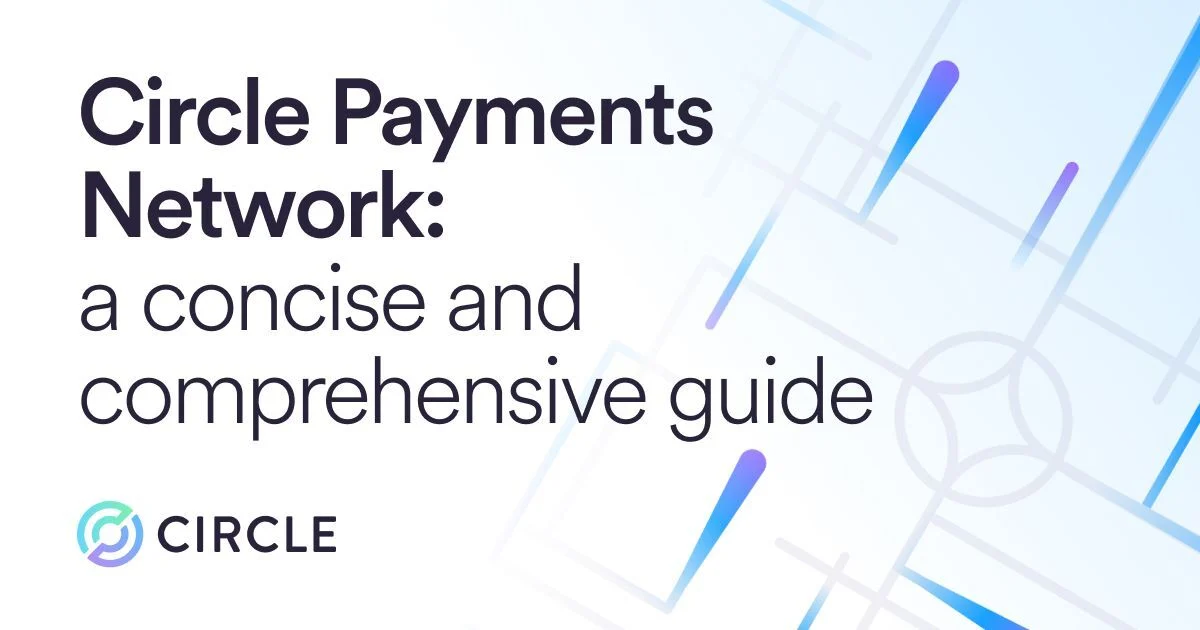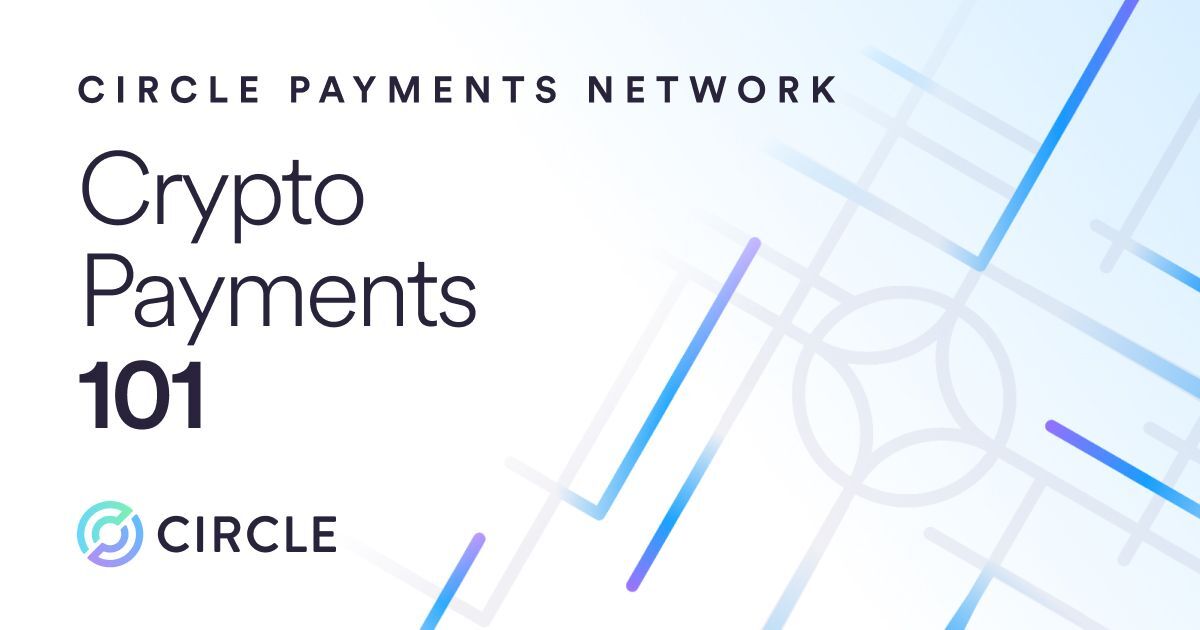Discover Circle Payments Network (CPN): a global network of financial institutions enabling payments use cases with 24/7 real-time settlement via stablecoins.

Who this is for: Banks, PSPs, VASPs, and enterprises who enable consumer, business, and institutional payment use cases.
What you’ll get from this guide: A clear explanation of what CPN is, how it differs from other payment networks, how it works end to end, why you should join, and how to get started.
CPN in 60 seconds
What is CPN? Circle Payments Network (CPN) is a global network of partners, including banks, payment service providers (PSPs), virtual asset service providers (VASPs) and enterprises, who enable consumer, business, and institutional payments with 24/7 real-time settlement via stablecoins like USDC and EURC. CPN facilitates transactions between Originating Financial Institutions (OFIs), who initiate transfers on behalf of senders, and Beneficiary Financial Institutions (BFIs), who handle the last-mile local currency payout. CPN uses stablecoins like USDC for real-time settlement over blockchain infrastructure.
How is it different? Traditional flows depend on bilateral relationships, pre‑funding, and batch processing. Card and closed networks weren’t built for cross‑border B2B or treasury use cases. Crypto‑only rails can be fast but often lack enterprise governance and standardized operations. CPN combines the best of these payment innovations to create a new way to move money where programmability and onchain finality can meet the institutional-grade membership standards, operational rules, and compliance requirements of traditional finance.
How CPN works, end to end
In order to join CPN, you must complete an eligibility review to be approved to transact on the network. Once approved, but before you begin transacting on CPN, you must set your operational preferences, which determine how you participate in and who you interact with on the network. Once your preferences are established, you can begin transacting.
OFIs collect funds from senders in local currencies, convert them to stablecoins, and send them to BFIs, which pay out receivers in their respective currencies. CPN matches financial institutions, smart routes for optimal pricing, and facilitates compliance and stablecoin settlement between counterparties.
Roles: OFIs, BFIs, and the broader ecosystem of service providers
An OFI originates the payment on behalf of the sender: it verifies the customer, performs necessary checks, converts local currency to stablecoins, and sends stablecoins to a BFI. A BFI is the receiving institution: it accepts the stablecoins, converts them to local currency, and pays the beneficiary.
While OFIs and BFIs form CPN’s core payment pathway, around these two roles sits a curated ecosystem of service providers that help make the network usable, efficient, and compliant at scale. These service providers are not intermediaries in the OFI-to-BFI transaction process — instead, they plug into CPN as supporting participants to extend capabilities.
We are actively adding service providers to the ecosystem, starting with credit services that remove the need for prefunding where stablecoin access is limited by geography or region. As the service provider ecosystem grows, we anticipate onboarding providers that offer liquidity, FX venues, reporting systems, wallet infrastructure, and more services that members can adopt as needed.
What a CPN transaction looks like
A typical payment begins when a sender initiates a payment on their payment platform, which is an Originating Financial Institution, or OFI, on CPN. The OFI pings the network and CPN provides the best payout options based on pricing and the OFI’s operational preferences. The OFI returns the quote to the sender, and adds their fees. The sender approves the quote and initiates the payment. The OFI sends encrypted Travel Rule and beneficiary details to the BFI, who decrypts, verifies, and approves the transaction. Once approved, CPN generates and sends a transaction request to the OFI, who approves and signs it. CPN validates and processes the transaction onchain. The BFI receives stablecoins and sends the equivalent value in local currency to the receiver’s bank account or other supported payment method. Both sides receive confirmations and standardized messages for reconciliation and recordkeeping.
In practice, the offchain part of the transaction includes discovery, quoting, and encrypted messaging for Travel Rule and beneficiary details, while the onchain part of the transaction includes the actual settlement with an auditable transaction ID and timestamp. That split keeps sensitive business data private while still giving everyone the benefits of open blockchain finality.
A CPN transaction example
Velano LLC, a US importer, receives an invoice for 735,000 BRL for coffee beans from their supplier in Brazil. They log on to Cubix Payments, their payment provider who’s an OFI on CPN. Velano requests a quote from Cubix Payments to pay in USD and settle in BRL.
CPN queries for quotes from USDC-to-BRL payout providers and returns the best quote to Cubix. Cubix shows Velano a quote for the USD-to-BRL transaction — with their fees included, and the exact amount of BRL the supplier will receive.
Velano approves the quote and initiates the payment. Cubix sends encrypted beneficiary and Travel Rule data to the receiving Beneficiary Financial Institution (BFI). The BFI decrypts, verifies, and approves the payment details.
Then Cubix mints the needed USDC. CPN generates and sends a transaction request to Cubix, who approves and signs the transaction. CPN validates and processes the transaction onchain. The BFI receives the USDC and offramps BRL into the beneficiary’s bank account near-instantly via PIX.
The payment is complete — fast, secure, and settled in minutes-end to end.
Here’s a quick video that shows the whole process at a glance:
Transaction fees and blockchain gas fees
CPN’s fee structure is simple and designed to be more cost-effective than legacy rails and proprietary networks. Transactions processed through CPN incur fees from two sources:
- BFIs: These fees compensate BFIs for local currency disbursement and processing, as well as cover FX spreads that reflect liquidity risk and conversion costs.
- CPN: This fee is a variable basis-point charge, tiered by country group, to support core network functions including compliance, security, and infrastructure.
Because settlement takes place on open, programmable blockchains, there are also blockchain transaction costs (i.e., “gas” fees) that cover the cost of using the network. (As of November 6, 2025, CPN supports Ethereum, Polygon, and Solana blockchains, with support for Arc coming soon.)
Key CPN design features
One-to-many integration
CPN is designed so partners can extend their global expansion by connecting to just a single API. Once connected to CPN, partners can enter new markets faster without having to integrate locally or negotiate new bilateral agreements. Ultimately this helps accelerate expansion and reduce time to go-live in new markets.
Smart routing and the RFQ process
Routing inside CPN is based on operational rules and pricing. The network takes into account each member’s operational rules — where they can send or receive, which counterparties or payment types they allow, and what limits apply — and pairs that with price and liquidity signals. When an OFI needs a quote, it can issue an RFQ for the desired payout market. Eligible BFIs return executable pricing. CPN chooses the best option for the OFI given cost, time, and operational preferences. This discovery and decisioning happens primarily offchain through CPN’s APIs, which means it’s fast, private, and easy to integrate into existing workflows.
Messaging, privacy, and compliance
CPN is designed for selective transparency. Counterparties share the information they need to process a payment and meet Travel Rule and other regulatory obligations, but they don’t broadcast sensitive business details to the world. Compliance payloads are exchanged securely between the OFI and BFI, and network governance defines how and when regulators or auditors can be given access when required by law. The result is a predictable, repeatable data‑sharing model that promotes auditability and reduces friction in onboarding new corridors.
Risk management you can tune
Every PFI has different appetites and regulatory obligations. CPN lets you configure geography, payment types, counterparty classes, and limits so your traffic reflects your policies. Continuous network monitoring and periodic reviews strengthen counterparty risk management, while standardized incident and inquiry processes make it easier to collaborate when issues arise. Compliance tooling and a clear KYC/KYB reliance model reduce duplication without compromising regulatory expectations.
Refunds, disputes, and exceptions
Disputes and exceptions happen in any network. CPN’s rulebook defines how members communicate, what evidence they share, and how they resolve issues. Because settlement is onchain, there are no card‑style chargebacks; instead, refunds are handled as new, agreed transactions that reverse or correct prior flows. Operational playbooks, SLAs, and escalation paths ensure that investigations and remediation steps are standardized and time‑bound.
Getting started
Customers expect global transfers to move like data: fast, transparent, and programmable. CPN gives institutions a way to deliver that experience without sacrificing governance or compliance. You get near‑instant settlement, standardized data exchange, and a path to compose new products on top of open, programmable infrastructure — while keeping the customer relationship, custody model, and risk controls that make your business work.
Joining the network: eligibility, setup, and go‑live
To join and transact on CPN, every participant must complete two critical readiness tracks: operational readiness (i.e., eligibility to participate in the network) and technical readiness (i.e., becoming equipped to move and settle funds).
The operational readiness track enables Circle to understand who you are, how you move money, and if you're eligible to join the network. Prospective PFIs must submit a request for information (RFI) that describes your flow of funds, capabilities, and business needs for global payments as well as complete an eligibility review to determine if your business and its respective operations meet CPN’s standards.
The technical readiness track enables you to access, move, and settle USDC onchain as part of the CPN protocol. The initial steps involve gaining access to USDC — either directly via a Circle Mint account, or through a crypto exchange or OTC desk — and setting up a wallet, which can be a Circle Wallet, or another compatible option. Then you’ll connect to CPN’s API to access the network.
Next step: If you’re interested in joining CPN, visit the CPN website and submit the interest form.
Circle Technology Services, LLC (CTS) is the operator of Circle Payments Network (CPN) and offers products and services to financial institutions that participate in CPN to facilitate their CPN access and integration. CPN connects participating financial institutions around the world, with CTS serving as the technology service provider to participating financial institutions. While CTS does not hold funds or manage accounts on behalf of customers, we enable the global ecosystem of participating financial institutions to connect directly with each other, communicate securely, and settle directly with each other. CTS is not a party to transactions between participating financial institutions facilitated by CPN who use CPN to execute transactions at their own risk. Use of CPN is subject to the CPN Rules and the CPN Participation Agreement between CTS and a participating financial institution.




